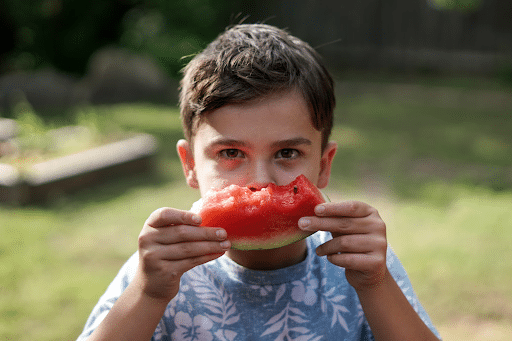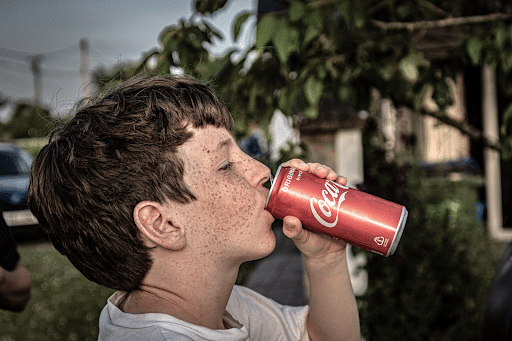Disorders of gut-brain interaction (DGBIs) are surprisingly common in children, yet often confusing for families. These children have chronic symptoms like bloating, nausea, vomiting, abdominal pain, or fecal incontinence. Medical testing shows no structural abnormalities. These kids are told, “everything looks normal,” but they don’t feel normal.
As a pediatric pelvic floor therapist, you’re in a unique position to support kids. These kids don’t just need a diagnosis. They need tools to restore their function! Let’s break down what’s happening in some of the common disorders you may see, then talk about how to approach treatment through a functional lens.

Upper Gastric Digestive Conditions
Let’s start by looking at a few of DGBI are seen in your pediatric patients. While these conditions don’t always come with clear diagnostic findings, the symptoms are very real and often quite distressing for both the child and their family. Understanding how they present can help you to connect the dots between gut dysfunction and the musculoskeletal, behavioral, and sensory systems you know so well.
Cyclic Vomiting Syndrome, Functional Nausea, And Functional Vomiting
Cyclic vomiting syndrome can begin in infancy or early childhood and involves repeated episodes of intense vomiting with periods of wellness in between.
Functional nausea and functional vomiting, on the other hand, may present more persistently. These kids can be deeply distressed by their symptoms and their parents may feel helpless.
Many of these children have no anatomical or infectious cause. Instead, what’s happening is an interaction between the gut, brain and the nervous system, including heightened sensitivity, poor motility, and chronic stress. Psychological support is key here.
You must evaluate and treat the child’s diaphragm, breathing mechanics, and abdominal pressures, as they play a crucial role in these children’s symptoms and improving their function. I elaborate on this further in the treatment section.
Rumination Syndrome
Rumination syndrome is one of the more misunderstood conditions. Children unintentionally regurgitate food after eating, which occurs without nausea or retching. Several other differential diagnoses must be ruled out first before a physician can diagnose a child with rumination syndrome.
The regurgitation happens when there is an increase in intra-gastric pressure from contraction of abdominal muscles, causing the lower esophageal sphincter to open and allowing food to come back up.
Rumination syndrome is often linked to a previous stressful event. But you can support these children by improving abdominal pressure regulation. Teaching diaphragmatic release and post-meal positioning (like left side-lying) may help reduce symptoms.

Aerophagia
Aerophagia is the excessive swallowing of air, leading to bloating, gas, and abdominal pain. This condition is more common in children with neurocognitive disabilities, as the way the child eats, breathes, and speaks can increase air intake. Some kids gulp air while chewing, while others may swallow air out of habit or due to poor oral-motor control.
Behavioral awareness and postural education are essential. Help the child slow down meals, reduce gum chewing or consumption of carbonated drinks, and improve their body awareness.
Functional Bowel Disorders
Pediatric Functional Non-Retentive Fecal Incontinence
Functional Non-Retentive Fecal Incontinence (FNRFI) involves fecal leakage without constipation or organic malfunctioning. These kids don’t typically have sphincter weakness, but instead have reduced awareness of bowel urge. This fecal incontinence tends to happen after school or before bed.
This condition requires a multidisciplinary approach, but you can focus on:
- Improving body awareness and urge recognition
- Releasing tension in the pelvic floor and using biofeedback
- Helping implement positive toileting routines
Irritable Bowel Syndrome
Irritable bowel syndrome (IBS) in children presents with recurrent abdominal pain with defecation and altered stool patterns. Some kids have constipation predominant IBS, others have diarrhea predominant, and some alternate between the two.
IBS is best understood as a gut-brain interaction disorder. Food sensitivities can contribute to IBS symptoms, so dietary adjustments are often helpful. Emotional stress is also a significant factor and contributes to symptoms.
Many of these children benefit from exercise interventions, manual therapy, and nervous system regulation. With this in mind, let’s take a closer look at treatment strategies for disorders of gut-brain interaction.

Disorders Of Gut-Brain Interaction Treatment Strategies For Pediatric Pelvic Health Therapists
Now that we’ve reviewed the syndromes, let’s talk more about what you can do to help your kiddos. Many of these children have already seen GI specialists and psychologists. From you, they need a thorough functional assessment of their body: how they move, breathe, sit, eat, and go to the bathroom.
Let’s dive into the four major areas that should guide your treatment.
1. Pressure Management
This is the cornerstone. Most DGBI symptoms are either caused or worsened by dysfunctional pressure regulation. Kids who chest breathe, brace their abs, or sit in collapsed postures create extra intra-abdominal pressure that interferes with digestion.
2. Behavior and Habits
Poor habits reinforce digestive dysfunction. Kids may rush meals, skip toileting, or avoid eating altogether. They may suppress urges or ignore cues from their body. Children and parents need guidance. The goal isn’t to push more fiber or fluids—it’s to make sure the child feels safe and in control of their body again.

3. Nervous System Regulation
DGBI are intertwined with nervous system dysregulation. These children live in a state of chronic stress, even if they don’t show it. That stress can heighten GI sensitivity and delay recovery. Aim to integrate regulation into your treatment strategies.
4. Dietary And Sensory Considerations
Diet plays a significant role in disorders of gut-brain interaction. Food allergies or sensitivities can greatly affect a child’s digestion and contribute to ongoing symptoms. Sensory processing challenges can show up as picky eating, so collaboration with feeding therapists or dietitians may be important in these cases.

You don’t need to “fix” the gut, but rather support it. Children with DGBI need a pediatric pelvic health therapist who understands their experience and offers sustainable solutions. Start with breathwork, assess posture, and build trust. Help them create new movement patterns for their body to use.
And remember, even if these symptoms have persisted for years, it’s never too late to help a child reconnect with their body in a healthier way. If you’d like to learn more about these disorders and specific treatment strategies to improve quality of life in your patients with DGBIs, sign up for my Pediatrics Level 2 course – Advanced Pediatric Bowel and Bladder Disorders.
I will be teaching this course live at the end of this month: May 31-June 1, 2025.
